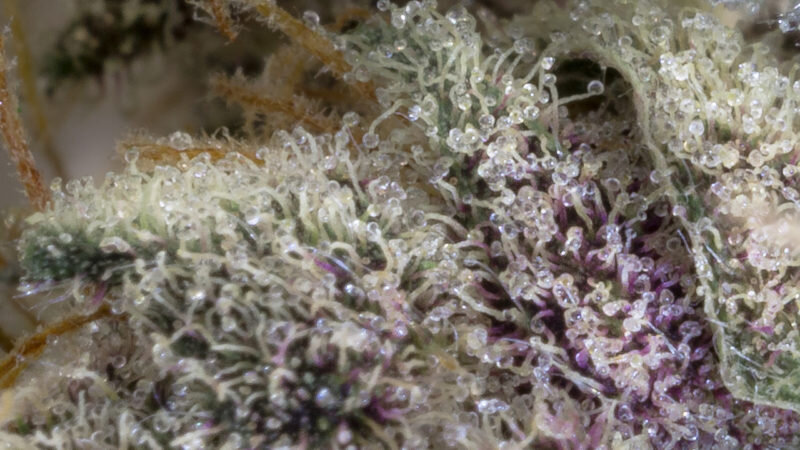Cannabis Dictionary: Cannabinoid
Cannabinoid
kə-ˈna-bə-ˌnȯid | Noun
A chemical compound found in cannabis and produced by the human body that interacts with our bodies’ receptors. Endocannabinoids, or internally produced cannabinoids, are an essential component of our bodies’ endocannabinoid system (ECS), which is largely responsible for maintaining internal balance. Phytocannabinoids, or marijuana cannabinoids produced by the cannabis plant, mimic the functions of our endocannabinoids and are responsible for the euphoric effects associated with THC.
“How many different cannabinoids are found in the cannabis plant?”
“Doctors can provide more accurate dosage recommendations if they know a plant’s cannabinoid profile.”
What are cannabinoids?
Cannabinoids are a class of lipophilic molecules that interact with the body’s endocannabinoid system (ECS). The ECS helps the body maintain functional balance through its three main components: “messenger” molecules that our bodies synthesize, the receptors these molecules bind to, and the enzymes that break them down.
Pain, stress, appetite, energy metabolism, cardiovascular function, reward and motivation, reproduction, and sleep are just a few of the body’s functions that cannabinoids impact by acting on the ECS. The potential health benefits of cannabinoids are numerous and include inflammation reduction and nausea control.
Endogenous cannabinoids
Endogenous cannabinoids are cannabinoids produced inside the body. Cannabinoid receptors fall into one of two categories: CB1 and CB2. Anandamide and 2-arachidonoylglycerol (2-AG), the body’s two most well-known endogenous cannabinoids, seek out both CB1 and CB2 receptors. They also activate several other receptor proteins, such as those that are sensitive to heat (TRPV receptors).
2-Arachidonyl glyceryl ether (2-AGE), or Noladin ether — a lesser-known endogenous cannabinoid — also binds to both CB1 and CB2 receptors, and has been shown to alleviate intraocular pressure in rabbits. N-arachidonoyl dopamine (NADA) is an agonist for the CB1 Receptors and TRPV1 protein, meaning it interacts with these receptors to initiate a physical response. It has also exhibited both antioxidant and neuroprotective effects. O-arachidonoyl-ethanolamine (OAE) or Virodhamine binds to CB2 receptors, and has successfully lowered body temperature in mice.
Exogenous cannabinoids a.k.a. phytocannabinoids
Is THC a cannabinoid?
Exogenous cannabinoids, more commonly known as phytocannabinoids, are plant-derived types of cannabinoids. In cannabis they are produced by granular trichomes covering the plant’s surface. Delta-9-tetrahydrocannabinol (THC) and cannabidiol (CBD) are not only the most well-known, but also the most prevalent cannabis compounds.
As an activator of the CB1 receptor, THC is the main intoxicating component of cannabis. THC intoxication has been shown to increase blood flow to the prefrontal cortex, the region of the brain responsible for decision-making, attention, motor skills, and other executive functions. The exact nature of THC’s effects on these functions will vary from person to person. When THC cannabinoids bind to CB1 receptors, it also triggers feelings of euphoria from the brain’s reward system.
Is CBD a cannabinoid?
CBD is the second-most-abundant cannabinoid found in the cannabis plant. Though non-intoxicating, CBD cannabinoids do exhibit psychoactive effects, but they are often described as calming rather than intoxicating.They contribute to CBD’s potential to treat anxiety, chronic pain, and seizures.
Other major cannabinoids include cannabinol (CBN), tetrahydrocannabinolic acid (THCA), and cannabidiolic acid (CBDA). CBN is a degraded form of THC, often found in old or aging cannabis plant matter. THCA is a non-psychoactive cannabinoid that turns into THC when decarboxylated, or exposed to heat. Similarly, CBD is a product of decarboxylated CBDA. More than 100 other cannabinoids have been successfully isolated from the cannabis plant, though little research has been done on their effects.
Other phytocannabinoids outside the cannabis plant
Phytocannabinoids have been found in several plant species other than the cannabis plant. Researches have yet to discover a non-cannabis phytocannabinoid as potent as THC, but other plants have compounds that interact with cannabinoid receptors in a similar fashion.
What foods contain cannabinoids?
Cacao is rich in anandamide — an endogenous cannabinoid that regulates mood, memory, appetite, and pain perception. Italian researchers also recently discovered that Black truffles are rich in anandamide. Kava, a medicinal tea from the Pacific islands, is rich in kavalactones — compounds that interact directly with CB1 receptors. This may account for kava’s long-standing reputation as a natural remedy for anxiety and pain. Several flowers — including helichrysum, coneflower, electric daisy, and Japanese liverwort — also contain phytocannabinoids, or other compounds that interact with the body’s cannabinoid receptors, or both.
What do cannabinoids do to the body?
Cannabinoids have a wide variety of effects on the body, all of which occur upon the activation of cannabinoid receptors. Cannabinoids that serve both medicinal and recreational purposes change the way we feel, and they have regulatory effects on several body functions. Every function in the body requires a specific balance of factors to perform at optimal capacity. When the body achieves this balance, it’s called homeostasis. Cannabinoids interact with receptors to trigger homeostatic responses throughout the body.
Effects on the nervous system
Cannabinoids trigger responses in the central nervous system largely through their interactions with CB1 receptors. There are CB2 receptors on immune systemcells in the brain as well, but their role and effect aren’t yet fully understood. Because our bodies already use cannabinoid molecules to regulate many functions, they’re inherently endowed with many targets that the cannabis plant can activate. The central nervous system is the main hub of the body’s CB1 receptors where they regulate a wide variety of brain functions.
CB1 receptors are the most widely expressed protein of their kind in the brain. They regulate the release of other neurotransmitters, such as serotonin, dopamine, and glutamate. CB1 receptors are responsible for the euphoric effects of cannabis, but they also play a critical role in the brain’s top-down control of pain.
Peripheral effects
Though not as prominent throughout the nervous system as CB1, CB2 receptors are found in some brain cells, playing a role in pain relief, inflammation control, and preserving the structure of nerve cells. But they’re mostly found on immune cells circulating throughout the body and brain via the bloodstream. CB2 receptors are present enough throughout the body to potentially mediate the damage caused by many human diseases, including those affecting the skin, bones, liver, lungs, cardiovascular system, and gastrointestinal system. The extent to which cannabinoids affect all of these conditions remains clinically uncertain.
Both CB1 and CB2 receptors provide multiple therapeutic pathways. For example, both receptors are present in the skin, where cannabinoids can potentially intervene to treat a wide variety of skin conditions. Arguably, the most crucial difference between the two is that CB1 receptors are a critical target of intoxication in the brain, while CB2 receptors only elicit non-intoxicating effects. While CBD has at least 14 different mechanisms of action, it doesn’t activate the CB1 receptor like THC, which is why CBD is able to initiate therapeutic effects without intoxicating the user.
As cannabis research slowly expands and medical applications become clearer, consumers should know that everyone’s endocannabinoid system is unique. Our bodies vary greatly in the way they respond to phytocannabinoids. We know the ECS exists, and we know that cannabinoids have therapeutic effects when they bind to cannabinoid receptors. But cannabis is a complex plant, and scientific consensus into its effects on the body remains elusive. Researchers are just beginning to learn exactly how cannabis compounds work together to effect our bodies and change the way we feel.
Are cannabinoids legal?
Cannabinoids derived from marijuana are only legal in the states where cannabis is legal for medical and/or recreational purposes. CBD oil, derived from the hemp plant, is legal to possess and use in the United States as long as the oil contains no more than 0.3% THC.
List of known cannabinoids
Cannabidiol (CBD)
Tetrahydrocannabinol (THC)
Tetrahydrocannabinolic Acid (THCA)
Cannabigerol (CBG)
Cannabichromene (CBC)
Cannabidivarin (CBDV)
via leafly.com

